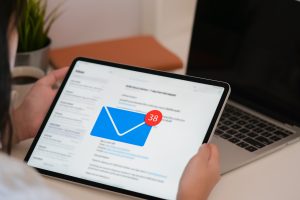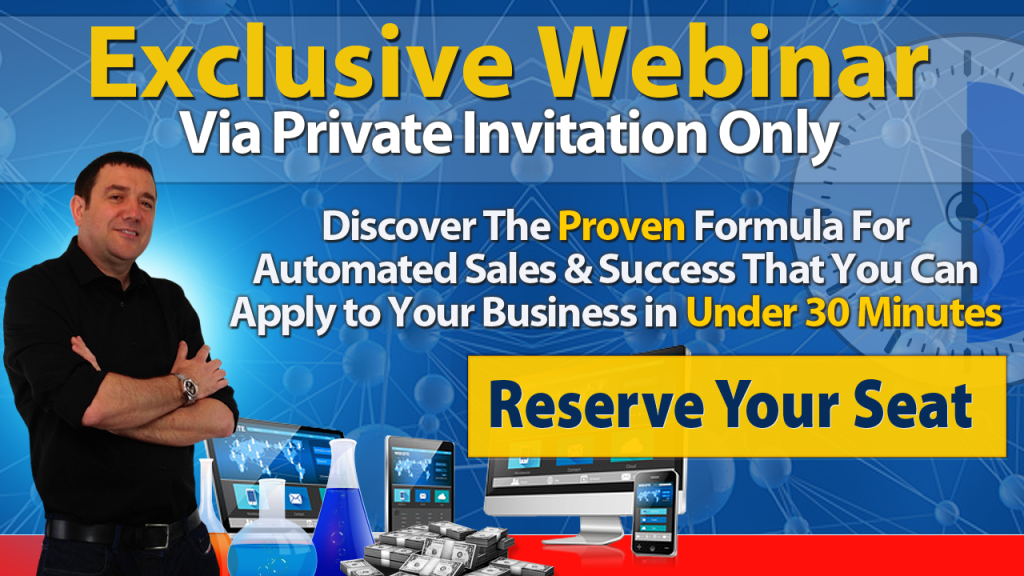
Welcome back to the second part of ‘Email Marketing Essentials for Beginners’. In case you missed part 1, you can check it out here. So, let’s not waste any more time, and jump right into mastering the art of advanced email marketing.
1) Broadcast vs series
When it comes to email marketing, you have two approaches to delivering your messages: broadcasting in real time or pre-writing a sequence.
Pre-written sequences:
In pre-written sequences, you can plan your emails in advance, setting specific dates and times or intervals from the point of subscription for them to go out. As soon as someone opts in, your pre-qritten series of emails are automatically sent to them. For example, when someone subscribes to your list in order to access a lead magnet, they might receive an email on the day of subscription, offering a link to the download page. Two days later, you could follow up with a message asking if they’ve downloaded their free product. This is where you start building a relationship with your subscribers. After, let’s say, another two days, you might introduce another (free) product or share more about yourself. This approach allows you to guide your subscribers on a journey.
Make sure that if you write messages in advance, they should be “evergreen”. The key reason for crafting evergreen content in pre-written email sequences is to ensure that even if someone joins your email list, let’s say, six months down the road, the messages they receive will remain relevant and up to date.
Note: It’s paramount to create an extensive email sequence. This not only ensures a well-structured and automated approach but also saves you from the need to write and create new broadcast messages daily, which can become a tedious and time-consuming task. An extended sequence streamlines your email marketing efforts, offering consistency and engagement over an extended period.
Practical tips:
Consider using tools like Google Docs to label your pre-written emails, such as email one, email two, and so on. This helps you keep track of your sequence. Begin by creating an outline to structure your sequence effectively. Craft compelling subject lines for each email, ensuring they flow seamlessly from one to the next.
Scheduling for success:
You should start creating email sequences now that you can schedule to go out on specific days. By doing this, you can concentrate on driving visitors to your landing page, knowing that your email sequence is working like a well-oiled machine.
Campaign benefits:
Email campaigns enable you to nurture relationships with your audience, and this, in turn, helps in making sales. Remember that the more expensive the product, the longer it usually takes for a visitor to convert. This is where webinars shine, as they provide ample time to build trust, increasing the likelihood of selling your products effectively.
Broadcasting in real time:
On the other side of the email marketing spectrum is real-time broadcasting. This approach involves sending messages as events happen to whatever lists you tick off. It’s a valuable strategy for delivering time-sensitive content or announcements to your audience, making it particularly useful for promotions, flash sales, or breaking news in your niche. While pre-written sequences offer a structured and automated process, broadcasting in real time provides flexibility and spontaneity, catering to the dynamic needs of your subscribers. The choice between the two depends on the nature of your content and your marketing goals.
By organizing your email marketing strategy with a mix of broadcasting and pre-written sequences, you can create a personalized and effective communication plan for your subscribers.
2) Autoresponder
Let’s start by clarifying what an autoresponder is. Despite the name, it doesn’t imply an automatic response to incoming emails. Instead, autoresponders empower you to send messages to everyone on your email lists. It’s crucial to distinguish between autoresponders and email clients like Gmail, Hotmail, and Yahoo. These email clients, while excellent for personal communication, do not function as autoresponder services. They lack the capability to efficiently bulk mail your subscribers and automate your messaging.
Choosing the right autoresponder:
When it comes to autoresponders, you have a spectrum of choices, ranging from basic to advanced. Pricing often depends on factors like the number of leads you have and how frequently you send emails. Here’s an invaluable piece of advice: don’t cut corners when selecting your autoresponder. List building is a fundamental aspect of your business, and a dependable autoresponder ensures your communication with subscribers is seamless and effective.
The power of list management and email segmentation:
When using an autoresponder, you’re not limited to just one list; you can have several. This allows you to craft distinct messages for different lists. The significance of having multiple lists becomes evident when considering how it empowers you to segment your audience systematically, meaning that you can categorize your subscribers based on a range of factors, be it their interests, behavior, or purchase history. This segmentation strategy enables you to send precisely tailored emails to specific groups without flooding others with irrelevant content. For instance, somewho who has subscribed to your list in order to download a free lead magnet can be put on your “freebie” list. When they purchase a product, move them to your buyer list. Those who invest in high-ticket items can be placed in your high-ticket list. This approach ensures that your emails are tailored to each segment’s specific needs and interests.
Autoresponders such as AWeber also have a powerful feature that can take your email marketing strategy to the next level. You can create automation rules, providing you with the ability to establish preset conditions or rules for your email lists. For example, you might set up a rule that states: “If someone signs up for list X, then remove them from list Y.”
Let’s illustrate this with an example. Imagine someone initially joined your list to receive a freebie, but later, they became a paying customer by purchasing one of your products. In this scenario, you wouldn’t want that individual to keep receiving emails designed for non-customers. Automation rules come to the rescue. You can create rules that ensure a smooth transition. In this case, the customers would be removed from list Y after signing up for list X.
Exploring self-hosted solutions:
Beyond established autoresponder services, you can also install an autoresponder on your own hosting account. This approach allows you to send emails directly from your server.
3) Things to remember
a) Respect your subscribers
It’s essential to recognize that your email list comprises more than just numbers and data. These are real individuals who have shown trust in you. Always remember that your subscribers are not mere statistics; they are people with needs and expectations. Building long-term relationships with loyal subscribers can significantly impact your business’s success.
b) Building trust and relationships
A common mistake in email marketing is overwhelming subscribers with offers without giving due attention to trust-building and relationship nurturing. This approach can lead to subscriber fatigue and a decreased engagement level. Prioritize the process of building trust and fostering meaningful connections with your audience.
c) Authentic recommendations
When recommending products or services, authenticity is key. Only endorse what you genuinely believe in and have confidence in. Avoid the pitfall of sending emails solely for profit. In case you make a mistake, don’t hesitate to acknowledge it and maintain transparency in your communication.
d) Personalized communication
Craft your emails as if you’re addressing a single, specific person. Remember that your subscribers are unaware of who else is part of your list. Avoid using generic greetings like “Hey guys” or “Hey everyone.” Keep your messages personal and authentic.
e) Fulfilling promises
Implement a strategy to reverse engineer your commitments and ensure they are fulfilled in your email campaigns, facilitated through automation. This practice is instrumental in automating the trust-building process. For example, if you make a promise in one email, ensure its fulfillment in the subsequent automated message.
f) Listening and learning
Attentively listen to your subscribers and gather insights into their preferences and feedback. These valuable insights can help tailor your email marketing strategies. Understanding your subscriber data is essential for predicting and optimizing your business income.
g) Balancing subscriber feedback
In email marketing, understanding your subscribers’ needs is important. You want to create content that resonates with them, addresses their interests, and fulfills their expectations. However, a crucial point to remember is that your email list won’t be a perfect match for absolutely everyone. Each subscriber is unique, with their own set of preferences and requirements. While it’s essential to listen and adapt to their needs, it’s equally important not to allow them to take control of your entire marketing approach. Your brand voice and message have a distinct identity, and that should remain consistent. Unsubscribes are part and parcel of email marketing, and not every subscriber will be a long-term fit. Instead of being disheartened by the occasional unsubscribe, focus on the continuous growth of your email list. By finding the right balance between meeting your subscribers’ expectations and staying true to your overarching goals, you can unlock the full power of email marketing without giving up control over your unique brand identity.
In conclusion, email marketing allows you to connect with your audience, nurture relationships, and drive business growth. As a beginner, you’ve now equipped yourself with the fundamental knowledge and strategies needed to start your email marketing journey. Remember, it’s not just about sending emails; it’s about engaging real people, building trust, and offering value. With the right tools, dedication, and a deep understanding of your subscribers, you can harness the full potential of email marketing and take your business to new heights. So, start crafting those compelling emails, nurturing those valuable leads, and watch your email marketing efforts flourish. The inbox is now yours to conquer!
Feel free to comment below and share.
To your success,
Olivia Ressler
P.S. Until not long ago, I myself had no idea about Email Marketing as I only recently delved into the world of online marketing. I am currently doing an amazing course called ‘Partnership to Success Program’ which teaches you how to create, launch and sell a digital product. If you’re also interested in learning product creation, I highly recommend checking out this training webinar* from my mentor John Thornhill. It won’t cost you a penny and is packed with fantastic information.
I took up the coaching offer at the end of the webinar just a few weeks ago and haven’t regretted it a second. In fact, I owe the existence of this blog to the program. So check out the webinar here*.

* affiliate link/advertising link
